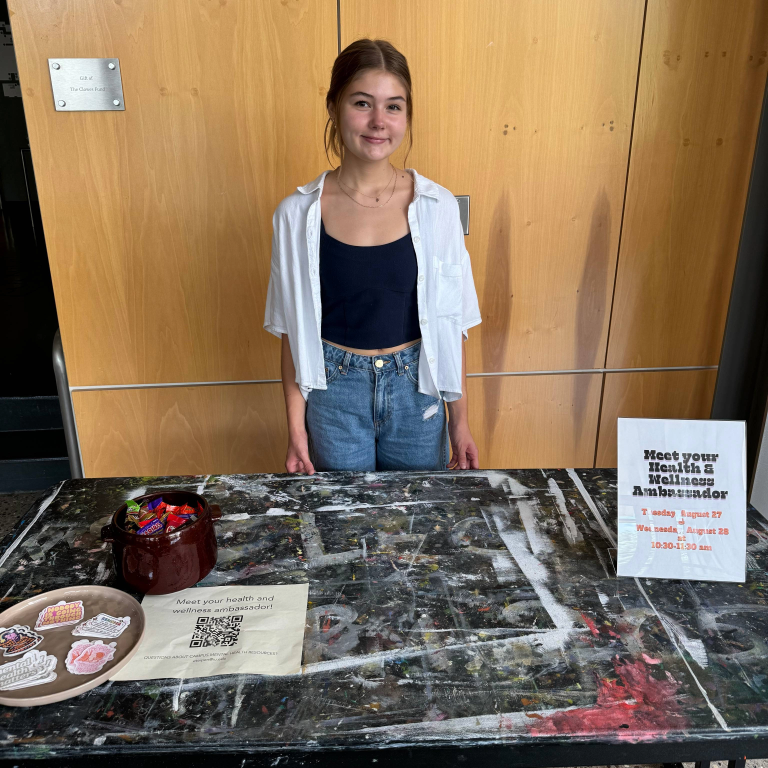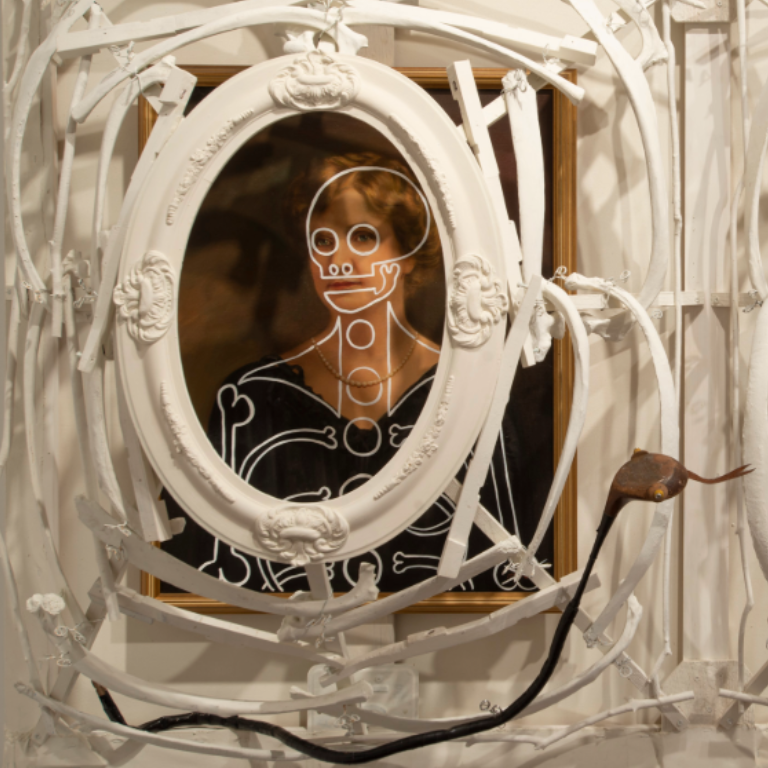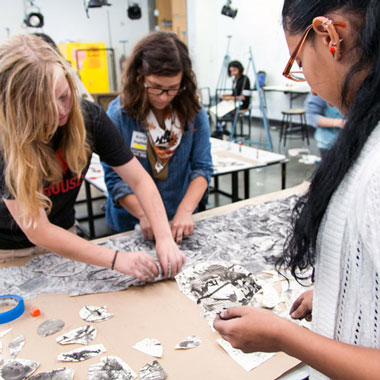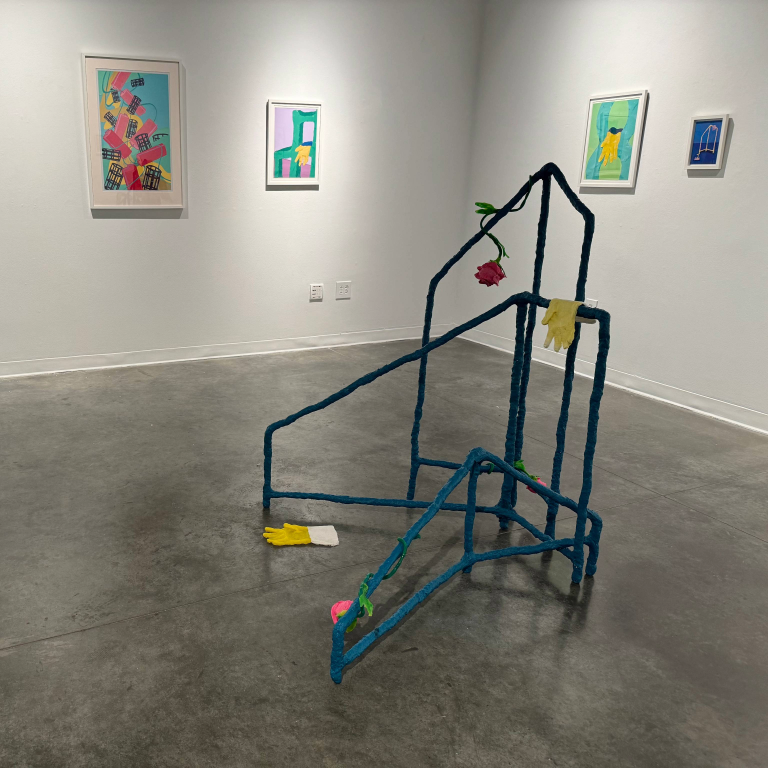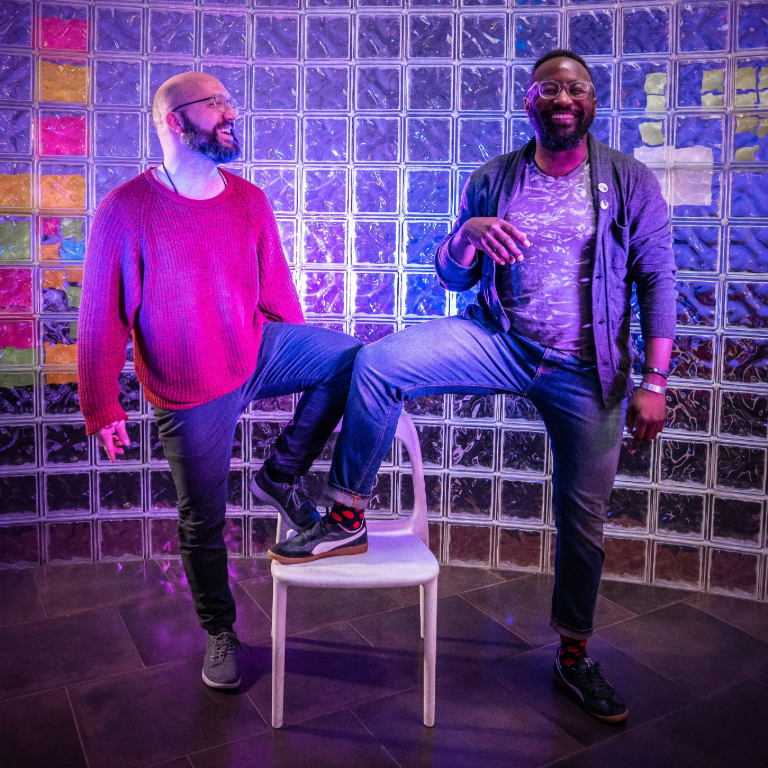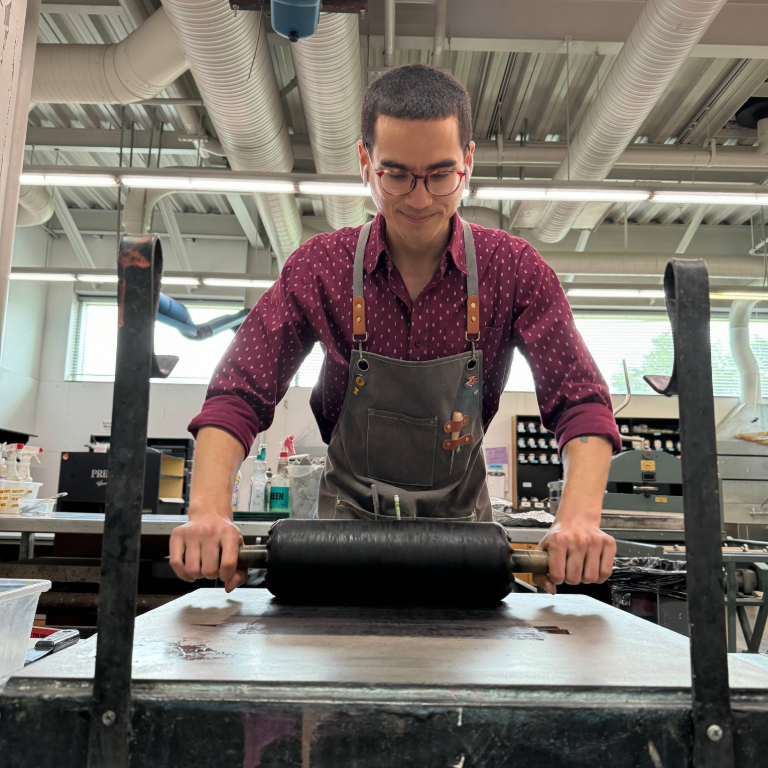Before attending Herron, Samuel E. Vazquez (B.F.A. Visual Communication Design ’10) grew up in New York City immersed in the same hip hop and graffiti movements that gave rise to such artists as Keith Haring and Jean-Michel Basquiat. Those formative years of artistic expression would set Vazquez on a path to Indianapolis in pursuit of his bachelor’s degree and becoming a visual artist.
Vazquez is the current scholar-in-residence with the IUPUI Arts and Humanities Institute and a featured artist in the “City as Canvas” exhibition, on view in the IMA Galleries at Newfields through January 28, 2018.
Here he shares his reflections on growing up in New York City during the era, as well as working in the studio and staying focused while producing new work.
HERRON: Your family moved from Puerto Rico to New York City in 1979, where you grew up during the height of the early graffiti movement. What was happening at the time?
SAMUEL VAZQUEZ: During that time, New York City was going through its worse fiscal decline in history and the most affected areas were the underserved communities, such as South Bronx, Harlem, and Lower East Side, to name a few. My family eventually settled in the upper Manhattan neighborhood of Washington Heights.
Living in Washington Heights was fascinating. The neighborhood was where graffiti (I prefer to call it "style writing") was first established in the city. As a 9-year-old, I saw remnants of the early 70s pioneering writers, including Snake 1 who lived just a few blocks from me. To hear about and see first-hand the birthplace of New York City style writing drew me in to not just be a spectator but also a participant.
The early 1980s is where what has been coined as "Hip Hop" converged with elements such as DJ'ing, MC'ing, breaking (we didn't call it “breakdancing”), and style writing (graffiti). For me, this era was full of energy and vibrancy. Everything from music, fashion, style, dancing, art, sports, and language derived from our attitude – an attitude that is bold, vibrant, straight-forward, defiant, resilient, and purposeful. It was a time full of restless energy.
HERRON: What inspired you to take up style writing?
VAZQUEZ: The energy, movement, rhythm, and impact of style writing grabbed my every ounce of attention. By the time I was in junior high school and moved to Spanish Harlem, and then to Harlem, my circle of friends and influences had widened. At 13 I adopted the tag name “BRAME” and was making an impact in other style writing circles. In the next couple of years, I joined style writing crews from Manhattan, the Bronx, Brooklyn, and Queens. At the same time, I was becoming aware of the downtown art scene and of the writers who were stepping into the fine arts world.
HERRON: Who in those circles had a major influence on you?
VAZQUEZ: Anthony "A-ONE" Clark was a very instrumental person in my path as a writer and artist. A-ONE was a member of TDS (The Death Squad), a writing crew that created a unique painting style, setting them apart from others. I met A-ONE at the Graffiti Hall of Fame in Spanish Harlem. The Hall of Fame was founded by Ray "Sting Ray" Rodriguez and is a schoolyard with vast wall space surrounding the playground. I often skipped school to go check out the latest style writing pieces at the Hall of Fame and eventually met A-ONE. During that time, A-ONE was collaborating with Jean-Michel Basquiat. For the next 5-6 years, I was educated on both style writing and the downtown art scene from A-ONE. Sadly, A-ONE passed away at the age of 37 in 2001 in Paris. To this day, I am in touch with other members of TDS including PART 1 and TOXIC – both amazing artists.
HERRON: How did those experiences define your current artistic practice?
VAZQUEZ: The uninhibited impulse of style writing along with the pace of the music and the nature of New York City grabbed my attention to look deeper at not only what was done, but also why we did what we did. So, while the foundation of my artistic practice is style writing and the city, I reconcile it with 25 years of experience living outside New York City. But in reality, it goes further back. As a school-age child, I visited the Metropolitan Museum of Art and the Museum of Modern Art (MoMA). That exposure to a vast landscape of artistic expressions led me to explore my work from a different perspective with Abstract Expressionism being the one that satisfies my curiosity to continue expressing through rhythm, movement, and energy. Working primarily in mixed media and found materials allows me to continue expanding on the act of creating something greater out of very little or what others find insignificant source material.



